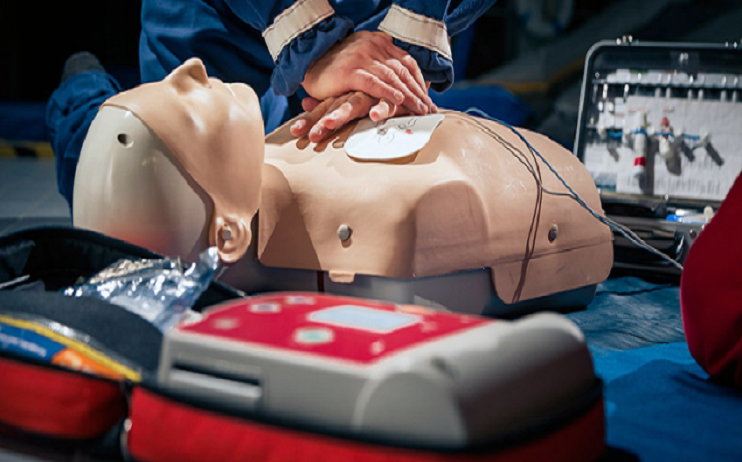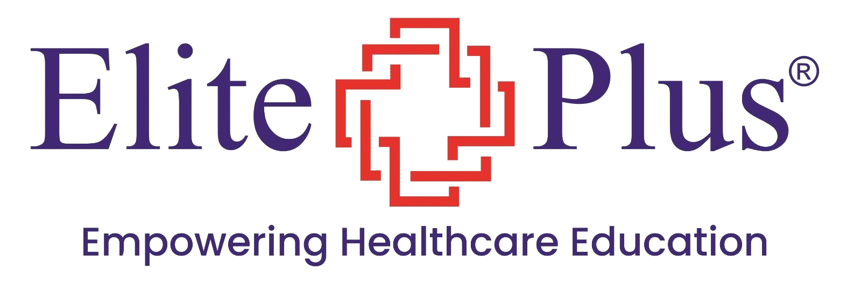Creating effective CPR/AED & First Aid training content is essential to equip participants with the knowledge and skills needed to respond confidently and effectively in emergency situations. Here’s a comprehensive outline of the key topics you can include in your training content:

CPR/AED & First Aid Training
At Elite Plus, we offer certified CPR/AED & First Aid Training designed to prepare individuals and teams to respond confidently and effectively during medical emergencies.
This life-saving course blends practical skills with theoretical knowledge, using advanced training manikins and AED simulators to create a realistic, hands-on learning experience.
Certificate
Participants receive a Certificate of Completion in CPR/AED & First Aid, valid as per training standards and organization policies (can be DISH approved if required).
Course Length
4-5 Hours
Course Highlights:
• Understanding the chain of survival
• Adult, Child & Infant Cardiopulmonary Resuscitation (CPR)
• Safe use of an Automated External Defibrillator (AED)
• Management of choking incidents
• Responding to cardiac arrest, stroke & unconsciousness
• Control of bleeding, burns, fractures, and shock
• Injury and wound management
• First response to seizures, allergic reactions, and poisoning
Training Methods:
• Interactive classroom sessions
• Hands-on practice with CPR manikins and AED trainers
• Realistic scenarios for better response training
• Q&A and performance feedback
Who Should Attend?
• Medical and nursing students
• Teachers and school staff
• Industrial and construction workers
• Corporate employees
• Public safety officials
• Anyone wanting to be prepared to save lives
Languages
English, Hindi
CPR/AED & First aid Training
Introduction to CPR/AED and First Aid:
• Good Samaritan laws and legal protections
• Chain of survival concept
Basic Anatomy and Physiology:
• Understanding the respiratory system
Cardiopulmonary Resuscitation (CPR):
• Assessing responsiveness and calling for help
• Chest compression technique (hands-only CPR)
• Rescue breaths and mouth-to-mouth ventilation
• Compression-to-ventilation ratio
• CPR for infants, children, and adults
Automated External Defibrillator (AED) Usage:
• When to use an AED
• AED operation and pad placement
• AED prompts and voice instructions
Choking and Airway Obstruction:
• Abdominal thrusts (Heimlich maneuver) for conscious individuals
• Back blows and chest thrusts for infants and conscious pregnant women
First Aid Basics:
• Checking for responsiveness and calling for help
• Controlling bleeding and using pressure bandages
• Treating burns, cuts, and scrapes
• Recognizing and managing shock
Injuries and Medical Emergencies:
• Head injuries and concussions
• Allergic reactions and anaphylaxis
• Diabetic emergencies
• Seizures and convulsions
• Heat-related illnesses and heatstroke
• Cold-related injuries and hypothermia
Environmental Emergencies:
• Poisoning and exposure to hazardous substances
• Drowning and water-related incidents
Secondary Assessment and Reporting:
• Gathering information for medical professionals
• Effective communication during emergencies
Hands-on Practice and Scenarios:
• Simulated emergency scenarios to apply skills learned
Certification and Renewal:
• Encouraging regular training updates
Mental Health First Aid Awareness (Optional):
• Approaches to provide initial support and assistance
• Encouraging seeking professional help
Resources and Additional Information:
• Reference materials, websites, and apps for ongoing learning
• Ensure that your training content is engaging, interactive, and tailored to your target audience's needs. Utilize visual aids, demonstrations, videos, and case studies to enhance understanding and retention. Additionally, consider providing opportunities for participants to practice skills in realistic scenarios, as this will boost their confidence and competence in real-life emergencies.

